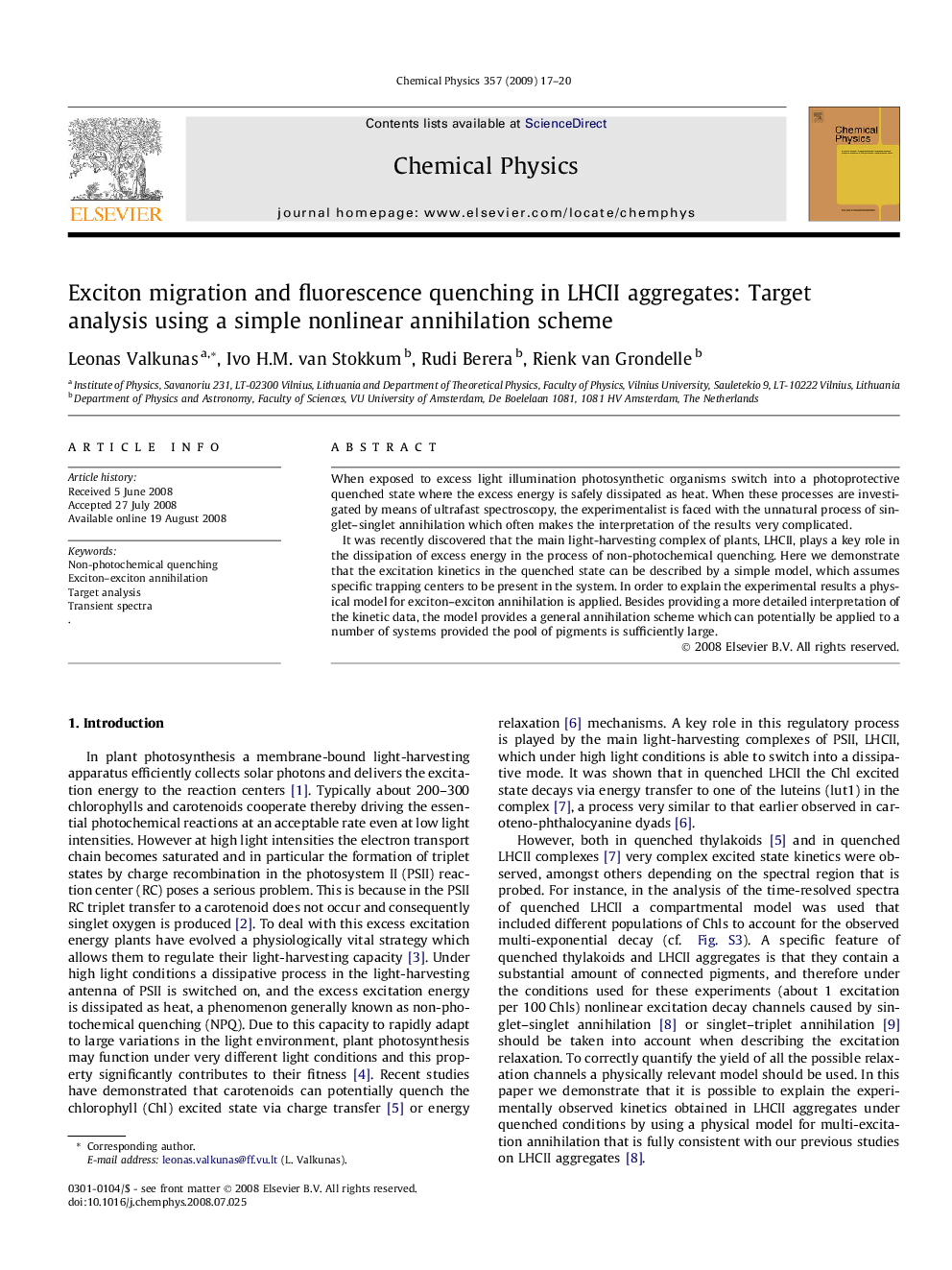| Article ID | Journal | Published Year | Pages | File Type |
|---|---|---|---|---|
| 5375658 | Chemical Physics | 2009 | 4 Pages |
Abstract
It was recently discovered that the main light-harvesting complex of plants, LHCII, plays a key role in the dissipation of excess energy in the process of non-photochemical quenching. Here we demonstrate that the excitation kinetics in the quenched state can be described by a simple model, which assumes specific trapping centers to be present in the system. In order to explain the experimental results a physical model for exciton-exciton annihilation is applied. Besides providing a more detailed interpretation of the kinetic data, the model provides a general annihilation scheme which can potentially be applied to a number of systems provided the pool of pigments is sufficiently large.
Related Topics
Physical Sciences and Engineering
Chemistry
Physical and Theoretical Chemistry
Authors
Leonas Valkunas, Ivo H.M. van Stokkum, Rudi Berera, Rienk van Grondelle,
